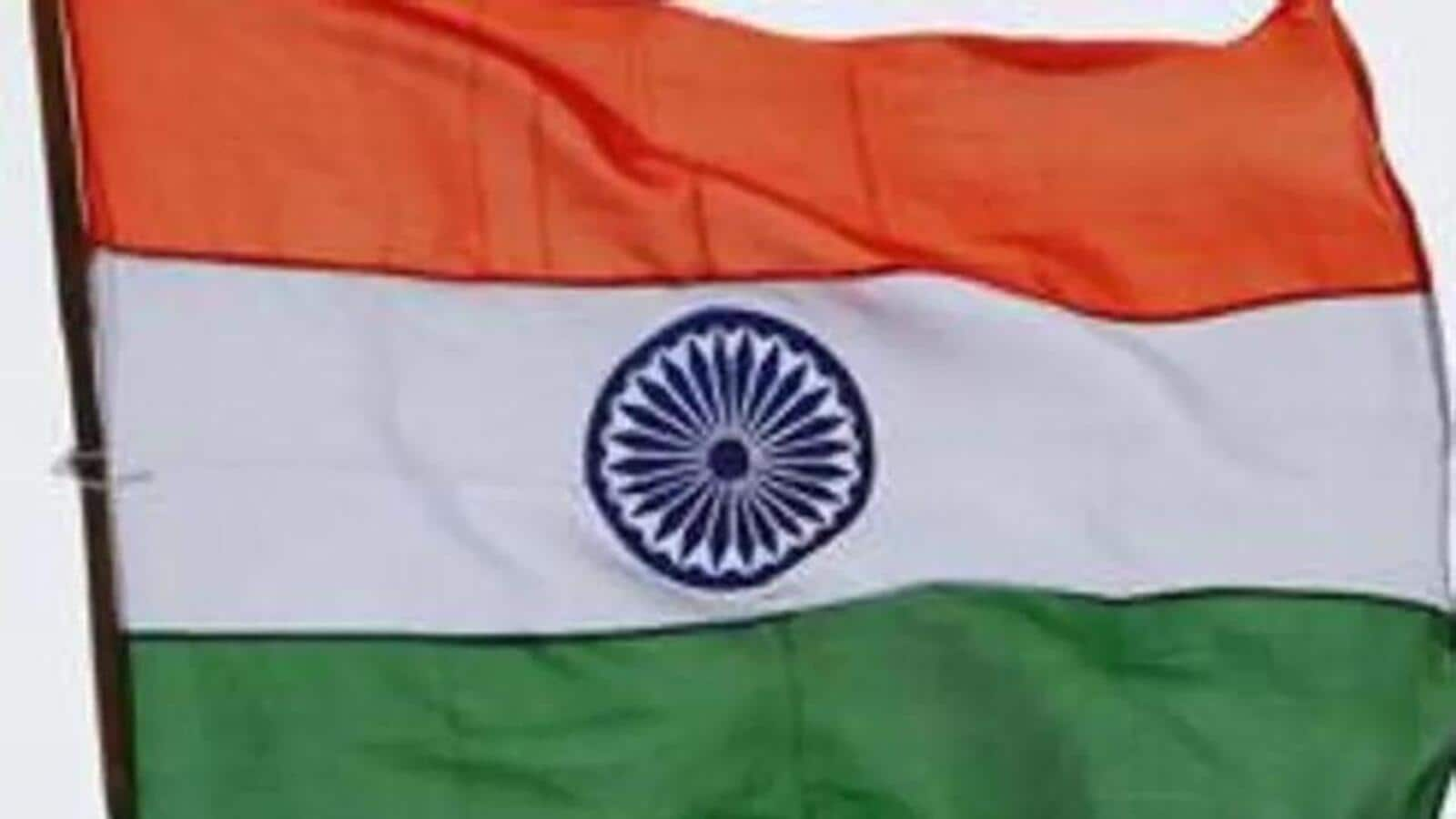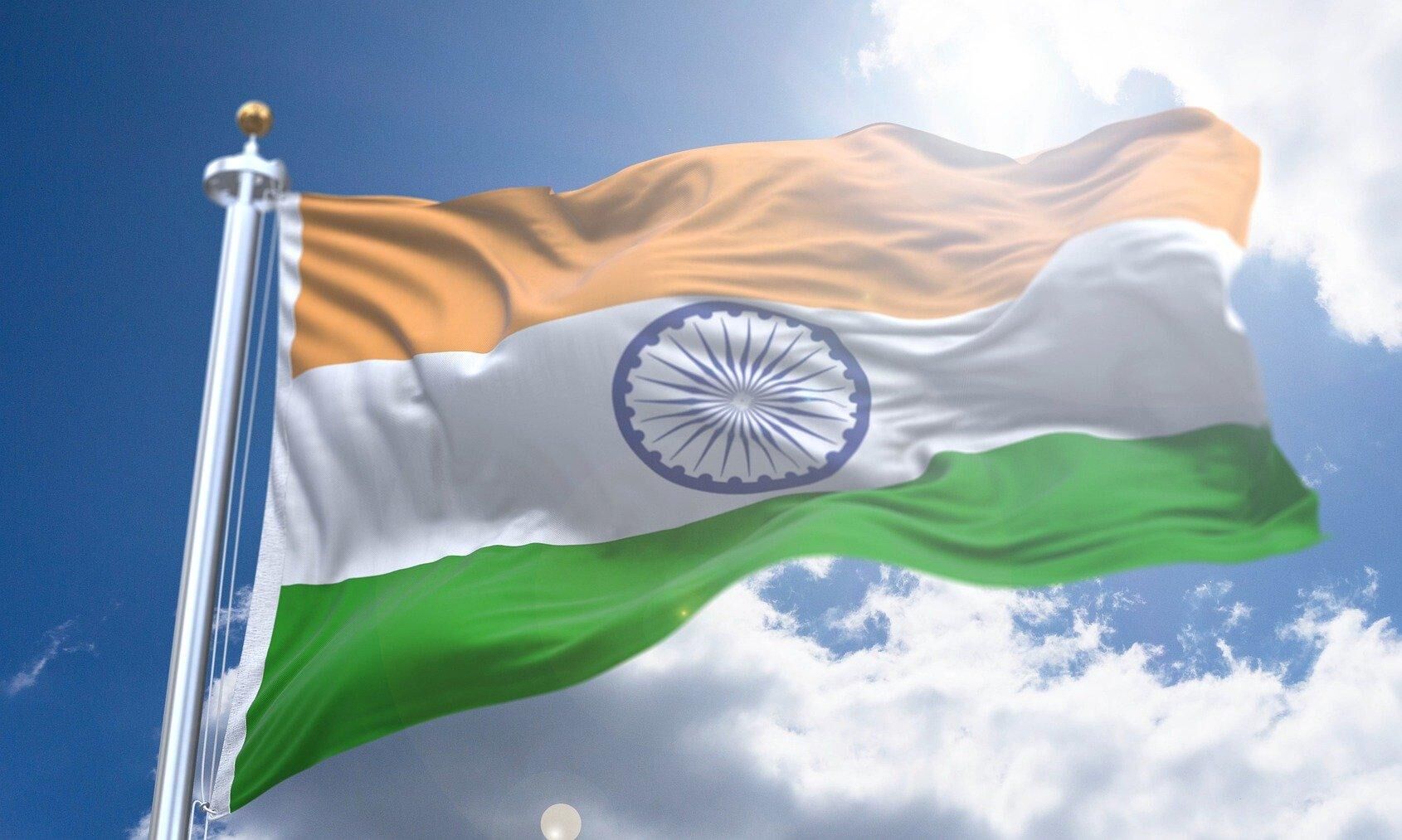History scripted in Srinagar as India’s flag unfurled on top of clock tower in Lal Chowk
 ]
]
For the first time in history, India’s flag - the tricolour - was unfurled on the clock tower in the famous Lal Chowk area in Srinagar - a city in Jammu and Kashmir. This is for the first time after India’s independence that the national flag has been unfurled on top of Ghanta Ghar (Clock Tower).
On the 73rd Republic Day celebrations, the locals along with NGO’s and administration held a flag hoisting ceremony at the Lal Chowk area. Two local activists Sajid Yousuf Shah and Sahil Bashir were carried by a crane on top of the clock tower where they unfurled the flag.
WATCH | Breathtaking display by India’s Border Security Force’s women team during Republic Day parade
“Since independence, we have only seen Pakistani flags hoisted here and those were Pakistani Sponsored elements who wanted to disrupt the peace in the Valley. Since the abrogation of article 370, we can see a lot of changes on the ground. The people were asking what Naya Kashmir means? Today hoisting the National flag on top of the clock tower is what Naya Kashmir stands for. This is what the people of Jammu and Kashmir want. We don’t want any Pakistani flags, we want peace and development,” said Sahil Bashir, activist after unfurling the flag.
The clock tower in Lal Chowk has always had great importance regarding the politics of Kashmir. All the big leaders of India and Jammu and Kashmir have tried in the past to hoist a national flag on top of the clock tower but never were successful.
“Since the independence of India, this was the only place which did not have the Indian National flag. I decided to do this, and we have done it. A lot of people tried it earlier, but we were the only ones successful. As an Indian, we have unfurled the flag here and it’s given us happiness,” Sajid Yousuf, activist.
On this occasion, a martial art event and students from various districts were brought to witness the unfurling of the flag. Security has been put on high alert across the Kashmir Valley especially in Srinagar city. Barricades were put up everywhere and vehicles were allowed only after checking. Mobile internet was also shut down this morning.
R-Day gaffe: Kerala minister hoists national flag upside down, salutes it
 ]
]
THIRUVANANTHAPURAM: In an embarrassing incident, the national flag was hoisted upside down by state port minister Ahamad Deverkoil during the Republic Day parade at the district headquarters in Kasaragod in north Kerala on Wednesday.
After hoisting the flag, the minister and other officials including the district superintendent of police saluted the Tricolour. Later some journalists who came to cover the event noticed the error and alerted the officials. Embarrassed district officials later lowered the flag and the minister hoisted it again.
The district administration has announced a probe and opposition Bharatiya Janata Party (BJP) has sought action against the minister and erring officials. Later the minister sought an explanation from district superintendent Vaibhav Saxena.
“The unfortunate incident should not have taken place. I heard enough rehearsals were not done prior to the event,” said Kasaragod member of parliament (MP) Rajmohan Unnithan, who was also present at the occasion. BJP state secretary K Sreekanth said it was a big insult to the national flag and sought an independent probe.
According to the Prevention of Insult to the National Flag or Constitution, whoever in any public place or in any other place within public view burns, mutilates, defaces, difiles, disfigures, destroys, tramples upon or [otherwise shows disrespect to or brings] into contempt (whether by words, either spoken or written, or by acts) the Indian National Flag or the Constitution of India or any part thereof, shall be punished with imprisonment for a term which may extend to three years, or with fine, or with both.
SHARE THIS ARTICLE ON
The quest to produce the most-advanced Indian flag yet
 ]
]
By August 15, in the 75th year of Independence, Bipin Kumar and his team want to develop the best-quality Indian flag.
For the last three months, the IIT professor from the textile and fibre engineering department has been mentoring a startup, SWATRIC, of IIT-Delhi, to design several advanced fabric structures for monumental national flags, or the ones which are at least 48ft to 72ft in dimension, weighing up to 55kg. Normally, these giant flags are seen hoisted in important locations where they are meant to be displayed all through the year. They cost anywhere between Rs 50,000 to 80,000. But, they hardly survive wear and tear beyond a month.
“The more these flags tear, the more business the vendors get to make. It is not economical to keep changing flags every few months. We aim to reduce the rate of changing flags from 7 times to 3 times in a year. And produce the best fabric for a market price which does not go beyond Rs50,000,” Kumar tells THE WEEK, a day before the Republic Day parade kicks off in Delhi
At the lab scale, the researchers claim to have successfully improved the strength of the fabric by 100 per cent. Last year, SWATRIC and the Flag Foundation of India (FFI) joined hands to filter the best possible fabric design and structure for monumental national flags to suit India’s diverse climatic and geographical conditions. Using the advanced fabric being developed by the IIT Delhi startup, the FFI has already installed two different prototypes of the monumental flag on the field, one in Delhi and the other one in Ladakh. “The aim is to make the monumental flag material durable for extreme weather conditions without being too heavy. Next month, we are also sending 10 different prototypes to different locations in the country for installation. So far, our research is at the prototyping stage, the exact durability of the flag will be known in the next few months,” says Kumar.
The Flag Foundation of India is a non-profit body whose primary vision is to popularise the display of tricolour by more Indians. FFI is co-founded by industrialist Naveen Jindal who, in 2002, won a seven-year-long legal battle to amend the Flag Code of India, established in 1950, which previously did not allow private individuals to hoist the national flag. In a Supreme Court verdict on January 23, 2004, India’s apex court said that flying the national flag is a Fundamental Right of an Indian citizen within Article 19(1) (a) of the Constitution of India that grants freedom of speech and expression. FFI has installed more than 80 monumental national flags all across India.
The several other fabric prototypes being developed at IIT are commissioned by the Army and some plants and factories under the Jindal group. “It is not easy to produce national flags. They take at least 15 days to be made. The ones made by Khadi Gram Udyog (the Karnataka Khadi Gramodyoga Samyukta Sangha is the only unit licensed to manufacture Indian flags) are biodegradable. The material quickly deteriorates in harsh conditions,” says Kumar, adding that an all-weather national flag should survive the wind and the rains.
Hindu Vahini members detained in Andhra’s Guntur for trying to unfurl Tricolour at Jinnah tower
 ]
]
Tensions prevailed at Jinnah Circle in Andhra Pradesh’s Guntur district when a few Hindu outfit workers allegedly tried to unfurl the Indian flag at the tower on Wednesday, January 26.
Members of the Hindu religious group, Hindu Vahini, on the occasion of Republic day, allegedly tried to unfurl the Indian flag at the tower located at the centre of Guntur city. However, police deployed at the centre detained the workers.
Earlier, the Andhra Pradesh Bharatiya Janata Party BJP had demanded the YS Jagan Mohan Reddy-led Yuvajana Sramika Rythu Congress Party (YSRCP) government to rename the Jinnah tower in Guntur.
BJP national secretary Y Satya Kumar, Telangana BJP MLA Raja Singh and Andhra Pradesh BJP state unit chief, Somu Veeraraju, too had demanded renaming the Jinnah tower with APJ Abdul Kalam’s name.
Andhra Pradesh BJP leader Vishnuvardhan Reddy had threatened the government to rename the Jinnah tower or party activists would demolish the tower and allot a new name to the centre.
READ | BJP calls for renaming Jinnah Tower Centre in Andhra Pradesh’s Guntur
Here’s all you need to know about the Flag Code of India
 ]
]
Bidisha Singha
As Republic Day approaches, and roadside stalls get all decked up in tricolour flags and festoons, we, too, get carried away in the spirit of it all. Putting up flags on cars, donning tricolour stoles and even wigs and masks, our homes and cities get awash in the colours of saffron, white and green. While it is all in the right spirit, we must, however, ensure that a national festival is celebrated with due respect and veneration and that we follow the codes of conduct while displaying our National Flag.
The display of the National Flag is governed by the provisions of the Emblems and Names (Prevention of Improper Use) Act, 1950, and the Prevention of Insults to National Honour Act of 1971. For those not in the know, the Ministry of Home Affairs, Government of India, orders strict compliance of the provisions contained in the Flag Code of India, 2002. In fact, in 2017, fresh directives were issued on it after e-commerce site Amazon was barred from selling products with the Indian flag on them.
There have been many other such incidents in the past when allegations have been levelled against people for violating the Flag Code.
Sachin Tendulkar was served with a legal notice in 2007 because a video had surfaced in which he was seen cutting a Tricolour cake. Amitabh Bachchan, too, had been embroiled in a legal case for having wrapped the Indian flag around him while celebrating India’s 2011 World Cup win. Shah Rukh Khan was apparently “insulting” the flag in photos that showed him holding the Tricolour upside down.
Then there was Sania Mirza who, in 2008, was prepared to quit tennis after a case was filed against her for ‘disrespecting’ the Indian flag as a photograph showed her sitting with her legs propped up on a table with a Tricolour close to it.
Mandira Bedi’s Tricolour sari as a TV host during the 2007 World Cup raked up another major controversy. While the Indian government had allowed the wearing of Tricolour images on clothing in 2005, it was clearly ruled that the flag can only be displayed on garments above the waist. However, in Mandira’s sari, the placement of the flag was termed ‘disrespectful’ as it was below the waist.
It is easy to target celebrities and point fingers at them, but as citizens of this country, every Indian should abide by the rules. Some of the key rules to keep in mind are:
• Whenever the flag is hoisted it should occupy the position of honour and should be distinctly placed.
• A damaged or dishevelled flag should not be displayed.
• The flag should not be used as a festoon, rosette or bunting or in any other manner for decoration.
• The flag shall not be intentionally displayed with the “saffron” down.
• Paper flags may be waved during important national, cultural or sporting events. However, such flags should not be discarded or thrown on the ground after the event.
• When a flag is in a damaged or soiled condition, it shall not be cast aside or disrespectfully disposed of but shall be destroyed as a whole in private, preferably by burning or by any other method consistent with the dignity of the flag.
• The flag shall not be draped over the hood, top, sides or back of a vehicle, train or boat.
• Every Indian cannot fly the National Flag on their vehicles. The privilege of flying the Tricolour is limited to only some dignitaries.
